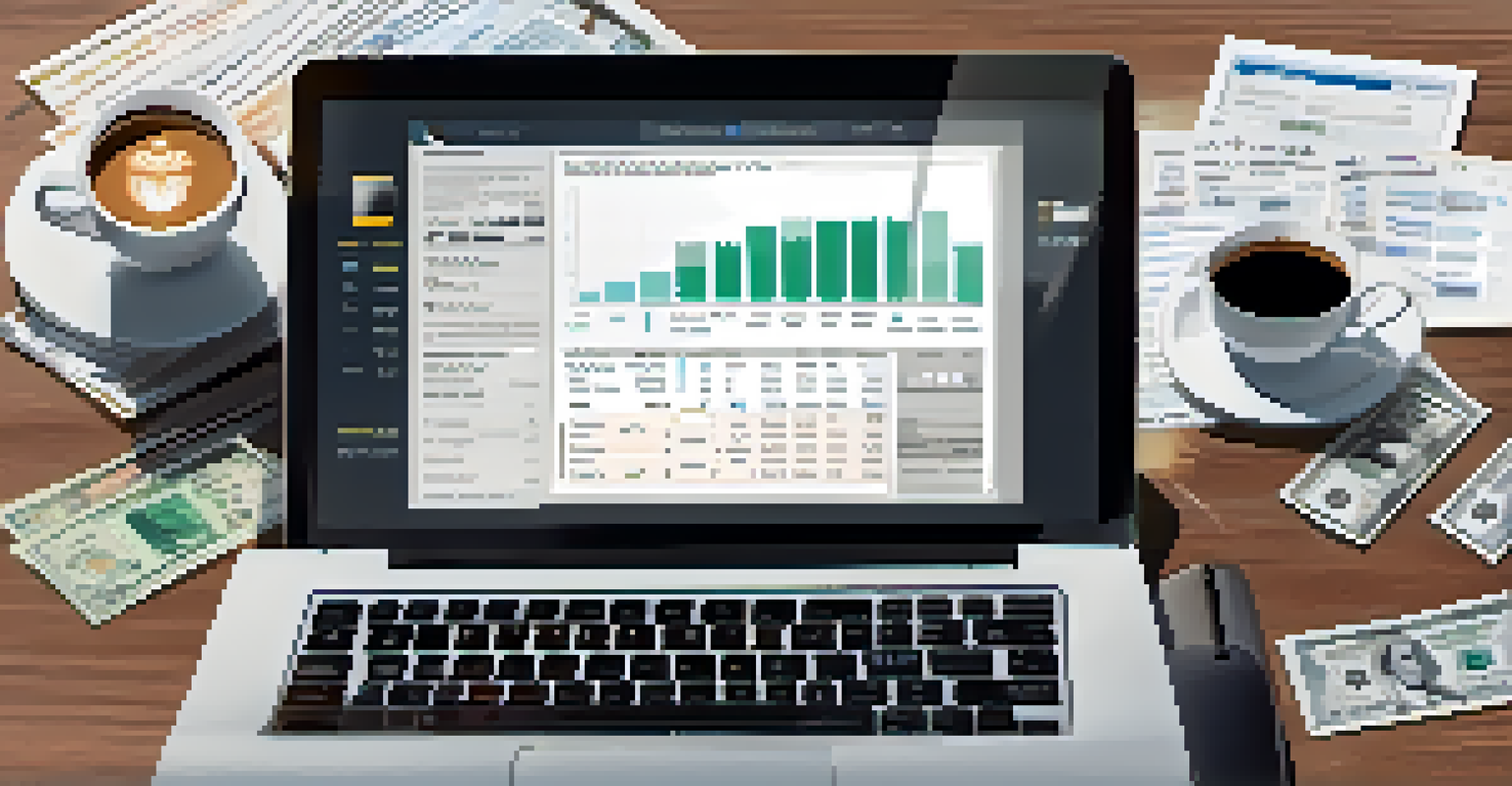Developing an Effective Cash Flow Forecasting Model for Firms

Understanding Cash Flow Forecasting and Its Importance
Cash flow forecasting is the process of estimating the flow of cash in and out of a business over a specific period. It's essential for maintaining liquidity and ensuring that a firm can meet its obligations. Without a clear cash flow forecast, businesses can face unexpected shortfalls that may lead to financial distress.
Cash flow is the lifeblood of any business. Without it, no business can survive.
Imagine trying to navigate a boat without a compass; that's what running a business without a cash flow forecast is like. This tool not only helps in tracking financial health but also aids in planning for future expenditures. By having a forecast, businesses can prepare for peaks and troughs in cash availability.
Ultimately, a well-structured cash flow forecast is a roadmap for financial stability. It allows businesses to make informed decisions about investments, expenses, and savings. Understanding its importance sets the stage for developing an effective forecasting model.
Gathering Historical Data for Accurate Forecasting
The foundation of a reliable cash flow forecast lies in historical data. Analyzing past cash flow statements provides insight into patterns and trends that can help predict future cash movements. This data includes sales revenue, operating expenses, and seasonal fluctuations.

For example, a retail business might notice increased sales during the holiday season. By recognizing these patterns, companies can anticipate cash inflows and outflows during similar periods in the future. This historical perspective acts as a valuable guide.
Utilizing Historical Data
Analyzing historical cash flow data helps identify trends and patterns for more accurate future projections.
Moreover, gathering accurate historical data allows businesses to create more realistic projections. The better the data, the more precise the forecasts, leading to informed decision-making down the line. This step is crucial in building a robust cash flow forecasting model.
Identifying Key Assumptions for Your Forecast
Every cash flow forecast is built on certain assumptions about future business conditions. These might include anticipated sales growth, changes in customer payment behavior, or shifts in operational costs. Clearly defining these assumptions is vital for the accuracy of the forecast.
Forecasting is not just about predicting the future; it's about planning for it.
For instance, if a company expects a 10% increase in sales due to a new marketing strategy, this assumption needs to be documented and justified. These assumptions guide the forecast and help identify potential risks and opportunities. If they change, the forecast should be adjusted accordingly.
In essence, assumptions act as the backbone of your cash flow model. They provide a framework for understanding how external factors may influence cash flow. Being transparent about these assumptions enhances the forecast's credibility and utility.
Creating a Detailed Cash Flow Forecast Template
Now that you have your historical data and assumptions, it's time to create a cash flow forecast template. This template should include sections for cash inflows, such as sales revenue and other income sources, along with cash outflows like operating expenses and capital expenditures. A simple spreadsheet can work wonders here.
Think of the template as a financial blueprint. Just like an architect needs a solid plan before constructing a building, a business requires a well-structured template to visualize its cash flow. This structure allows for easy adjustments as new information becomes available.
Importance of Cash Flow Forecasting
Cash flow forecasting is crucial for businesses to maintain liquidity and make informed financial decisions.
Incorporating categories for both expected and unexpected cash flows can also enhance the template's effectiveness. This comprehensive approach ensures that businesses are prepared for any financial surprises. A detailed template is an essential step in effective cash flow forecasting.
Projecting Cash Inflows and Outflows Accurately
With your template ready, the next step is to project cash inflows and outflows. Start by estimating your sales for the upcoming period, considering seasonal trends and historical data. Then, factor in other income sources, such as investments or loans.
On the outflow side, list all expected expenses, including fixed costs like rent and variable costs like inventory purchases. It's crucial to be as comprehensive as possible to avoid surprises. Regularly reviewing these projections helps keep the forecast aligned with real-world conditions.
Ultimately, accurate projections lead to better financial planning. By being diligent in forecasting both inflows and outflows, businesses can proactively manage their finances. This proactive approach is key to ensuring long-term success.
Monitoring and Adjusting the Cash Flow Forecast
Creating a cash flow forecast is not a 'set it and forget it' process. Continuous monitoring and adjusting based on actual performance is essential. Regularly comparing forecasted figures with actual cash flow helps identify discrepancies and areas for improvement.
For example, if sales are higher than expected, it may be necessary to adjust cash inflow projections. Conversely, if expenses are exceeding estimates, it's crucial to reassess and make adjustments to maintain financial stability. This ongoing process keeps the forecast relevant and useful.
Adjusting Forecasts Regularly
Ongoing monitoring and adjustments to cash flow forecasts ensure businesses remain agile and responsive to changes.
Incorporating feedback loops into the forecasting model ensures businesses remain agile. This adaptability allows firms to respond effectively to changing market conditions and internal capabilities. Continuous improvement is a hallmark of successful cash flow management.
Utilizing Technology for Enhanced Forecasting Accuracy
In today's digital age, leveraging technology can significantly enhance the accuracy of cash flow forecasting. Various software tools are available that automate data collection and analysis, making the forecasting process more efficient. These tools can integrate with existing accounting systems, providing real-time updates.
Imagine having a personal financial assistant that does the number-crunching for you. That's what cash flow forecasting software can do. By utilizing these technologies, businesses can focus more on strategic planning rather than getting bogged down by manual calculations.

Furthermore, many tools offer predictive analytics capabilities, allowing for more sophisticated forecasting based on current trends. This technological edge can be a game-changer for businesses looking to optimize their cash flow management. Embracing technology is essential for staying competitive in today's fast-paced environment.